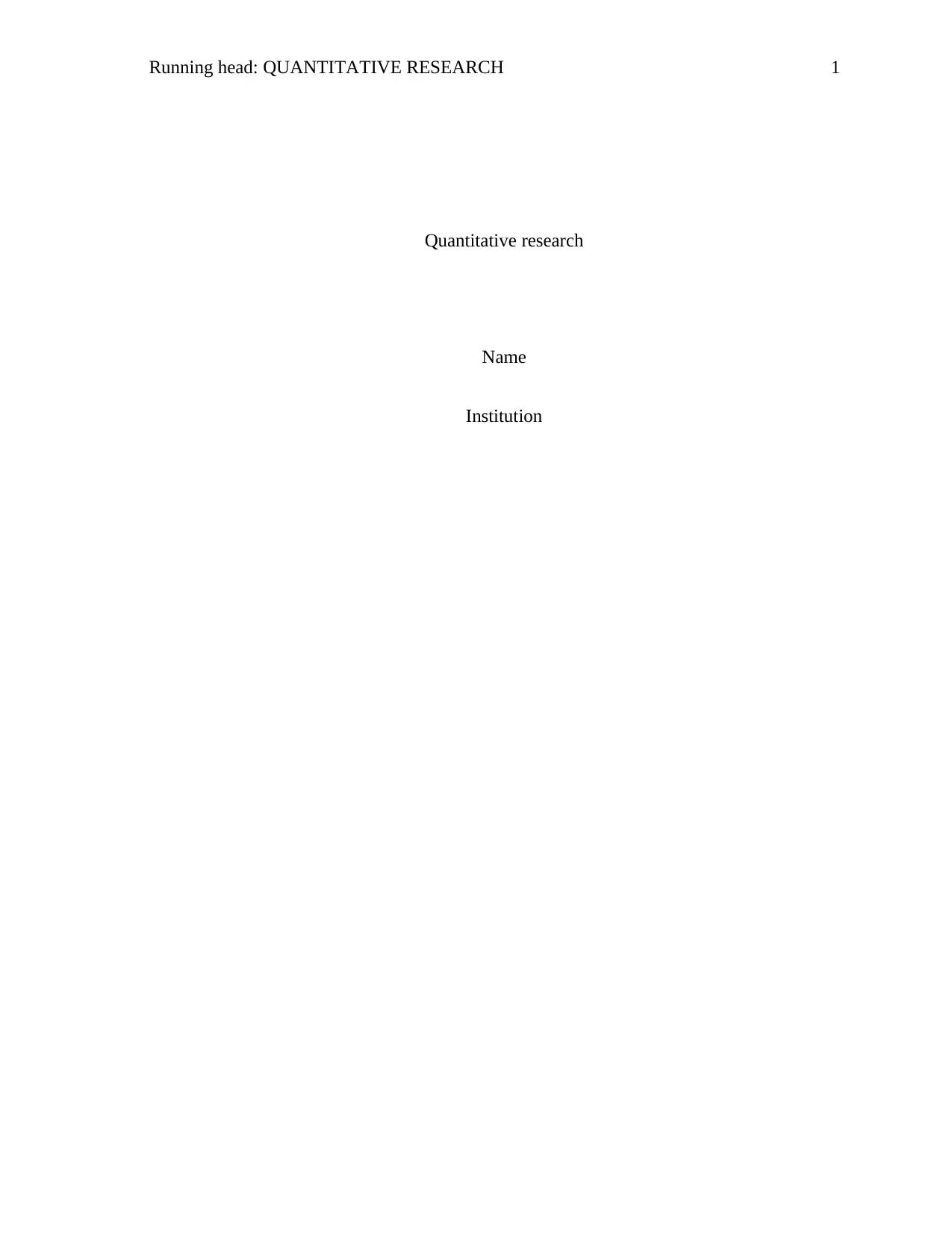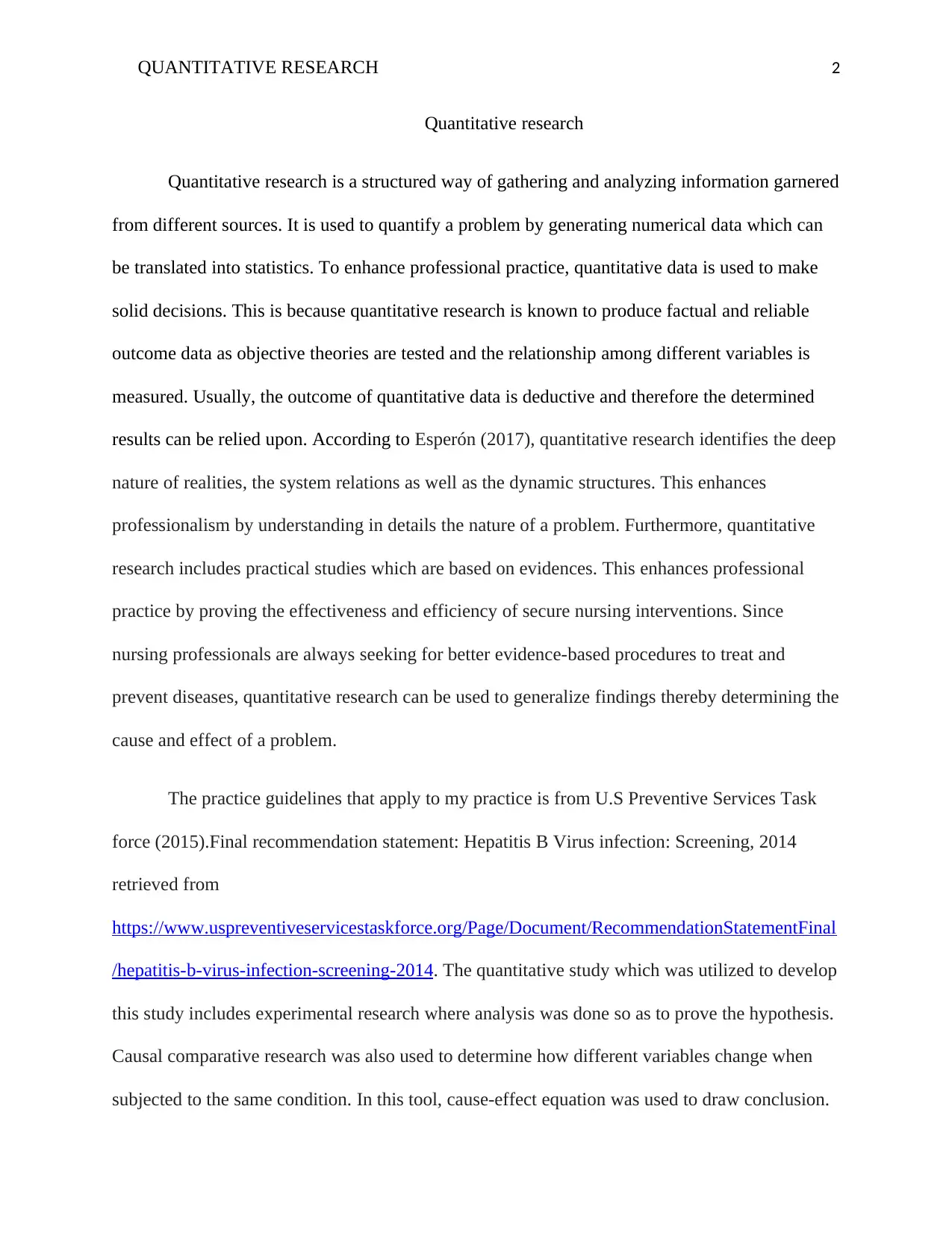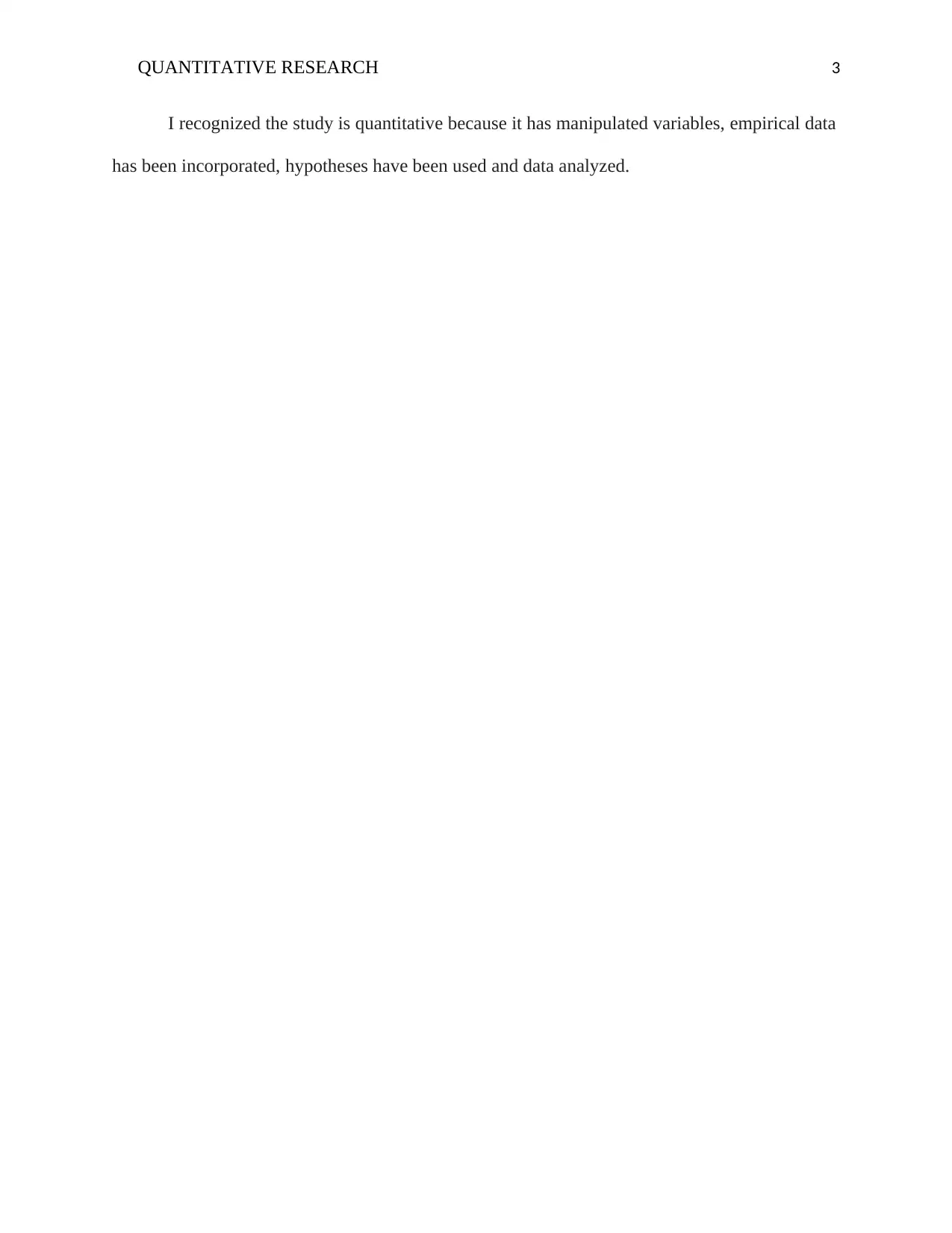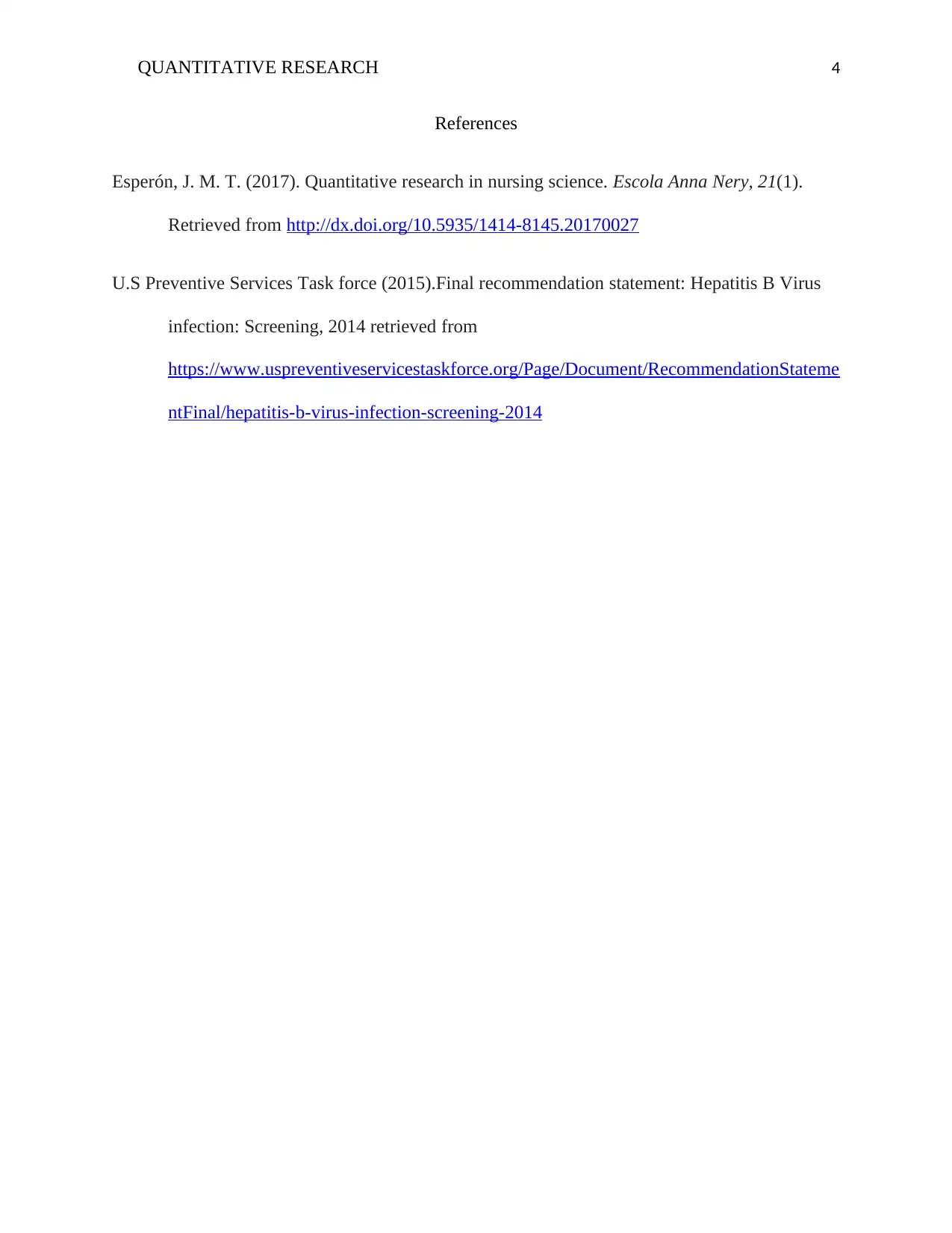Quantitative Research Report: Analysis of Hepatitis B Virus Screening
VerifiedAdded on 2022/11/14
|4
|383
|1
Report
AI Summary
This report delves into the application of quantitative research within the healthcare domain, specifically focusing on its relevance to nursing practice and the U.S. Preventive Services Task Force (USPSTF) guidelines. The report explores how quantitative research methodologies, such as experimental and causal-comparative designs, are employed to gather and analyze data, with the aim of generating evidence-based practices. The report also examines the role of quantitative research in identifying the nature of a problem and in evaluating the effectiveness of nursing interventions. Furthermore, the report highlights the importance of quantitative research in the context of the USPSTF's recommendations regarding Hepatitis B screening, demonstrating how research findings can inform and improve healthcare practices. The report emphasizes the use of empirical data, manipulated variables, and hypothesis testing to derive reliable and objective conclusions.
1 out of 4











![[object Object]](/_next/static/media/star-bottom.7253800d.svg)